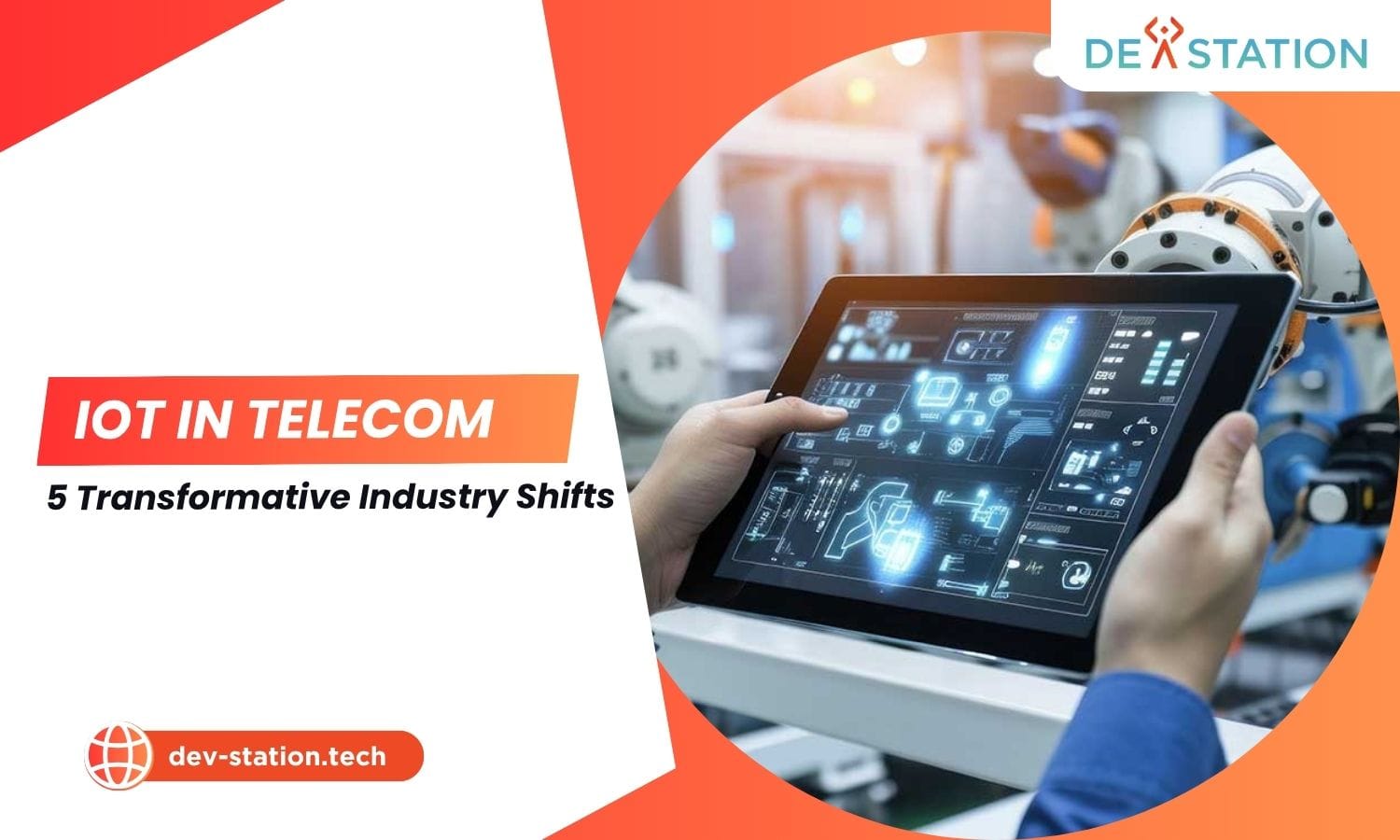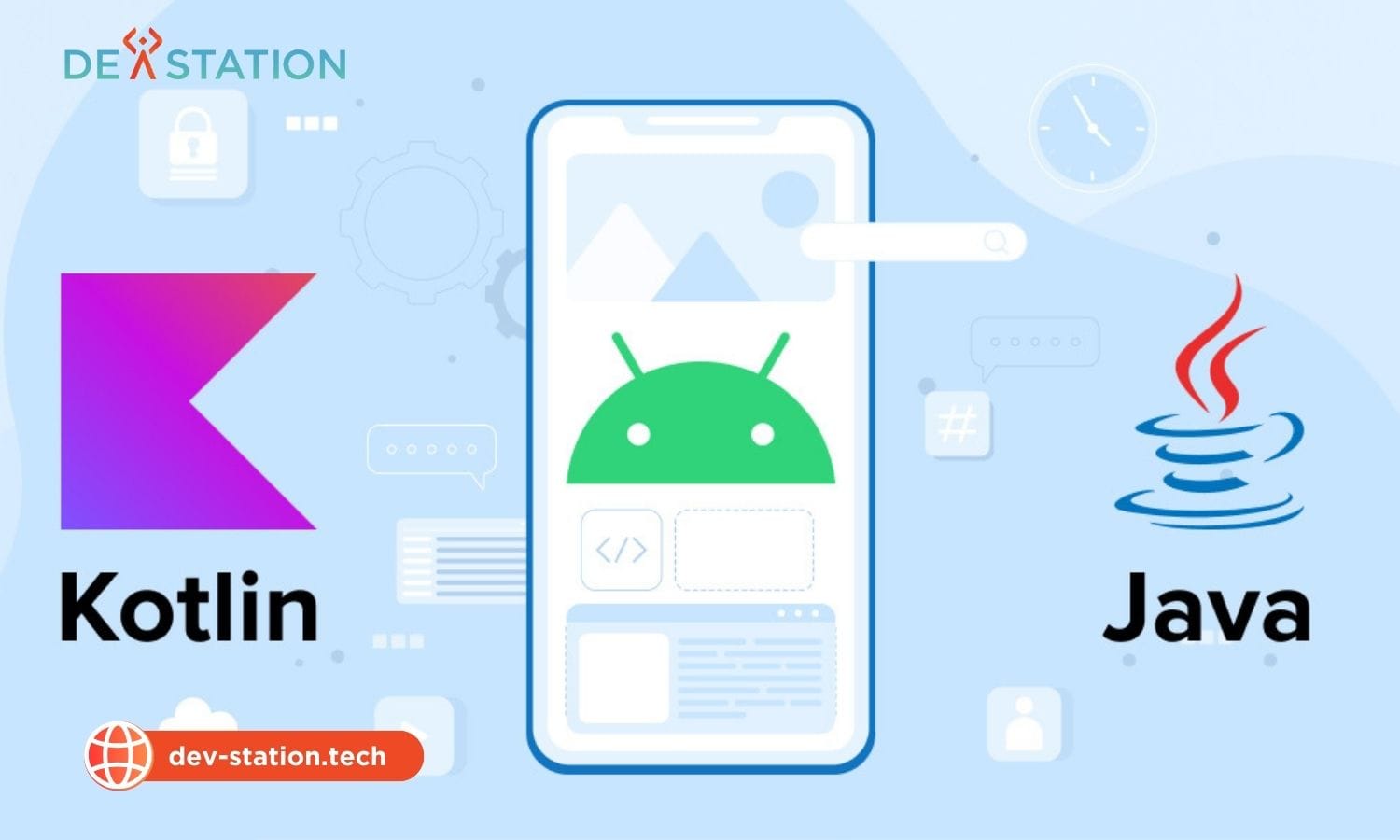IoT in telecommunications, the dynamic integration of internet of things devices with telecom networks, is fundamentally reshaping the industry by creating unprecedented opportunities for growth and efficiency. At dev-station.tech, Dev Station Technology empowers telecom providers to harness these connected technologies, turning network infrastructure into a platform for intelligent services and creating new value from massive data streams. Explore enhanced connectivity, operational intelligence, and network automation.
Contents
ToggleHow Does IoT Enhance Network Management and Optimization?
The internet of things revolutionizes telecom network management by embedding intelligent sensors across infrastructure, enabling real-time performance monitoring and unlocking AI-driven predictive maintenance. This data-first approach reduces operational costs, minimizes downtime, and dramatically boosts service reliability.
The traditional approach to maintaining vast and complex telecom networks has long been reactive or based on fixed schedules. This model is inefficient, leading to costly, unexpected downtime and inefficient allocation of resources. The integration of the Internet of Things (IoT) marks a paradigm shift towards a proactive, data-driven strategy. By deploying a vast array of sensors on cell towers, base stations, fiber optic lines, and power systems, telecom operators gain an unprecedented, granular view of their entire infrastructure in real time.
These sensors continuously collect critical operational data, including temperature, humidity, power consumption, signal strength, and equipment vibration. This stream of information is the foundation for advanced predictive maintenance. According to a study, AI-powered predictive maintenance can reduce unplanned maintenance visits by up to 30% and significantly cut downtime. For a telecom operator, this translates into substantial cost savings and, more importantly, a more reliable network for its customers.
AI and machine learning algorithms analyze this data to identify patterns and anomalies that precede equipment failure. Instead of waiting for a component to break, operators are alerted to potential issues, allowing them to schedule maintenance proactively. This proactive stance not only prevents service disruptions but also extends the lifespan of expensive network assets. Effective network monitoring is no longer about just seeing if a system is online or offline; it is about understanding its health and predicting its future state.
What Is The Financial Impact of Predictive Maintenance?
Implementing IoT-based predictive maintenance offers significant financial benefits, including lower emergency repair expenses, optimized resource allocation, and extended equipment lifespan. Studies show it can lead to a 20-25% reduction in overall maintenance costs.
The financial case for adopting IoT in network maintenance is compelling. Consider a hypothetical scenario for a mid-sized telecom operator with 5,000 cell towers. Traditional maintenance might involve quarterly physical inspections and reactive repairs. By implementing an IoT solution, they can reduce scheduled visits and, more critically, prevent major outages.
- Reduced Downtime: An AI-driven system can predict a power supply failure, allowing for replacement during a scheduled, low-traffic window instead of a catastrophic failure during peak hours that could affect thousands of customers.
- Optimized Workforce: Instead of dispatching crews on fixed schedules, technicians are sent only when and where they are needed, equipped with specific information about the problem. This improves first-time fix rates and overall efficiency.
- Lower Operational Costs: Proactive maintenance prevents the cascading failures that often accompany a major breakdown, saving on expensive, complex repairs and extending asset life.
How Does IoT Create New Revenue Streams for Telcos?
IoT allows telecom operators to move beyond selling basic connectivity and offer high-value managed services. This includes specialized IoT connectivity packages, data analytics platforms, and end-to-end industry solutions, capturing a larger share of the rapidly growing IoT market.
For decades, the primary business model for telcos has been selling connectivity for voice and data. However, the Internet of Things provides a monumental opportunity to diversify and create lucrative new revenue streams. Instead of being a simple pipe for data, telecom companies are uniquely positioned to become the central enablers of the entire IoT ecosystem. The global IoT telecom services market is projected to grow from $25.33 billion in 2024 to $106.67 billion by 2029, demonstrating a massive opportunity.
This transformation involves a strategic shift up the value chain. While basic connectivity for an IoT device may generate only a small amount of revenue per month, offering a complete managed service can increase that value significantly. These services can be categorized into several key areas:
| Service Category | Description | Example |
|---|---|---|
| Managed IoT Connectivity | Providing specialized SIM cards (including eSIMs), data plans, and a management platform for businesses to deploy and control their IoT devices globally. | A logistics company using a telco’s platform to manage SIMs in thousands of tracking devices across multiple countries. |
| IoT Platform as a Service (PaaS) | Offering a cloud-based platform that provides device management, data storage, and analytics tools, allowing businesses to build their own IoT applications. | An agricultural tech company using a telco’s platform to build an application for farmers to monitor soil sensors. |
| End-to-End Solutions | Partnering with hardware and software vendors to offer complete, ready-to-deploy IoT solutions for specific industries like smart healthcare or industrial automation. | A telco offering a complete smart building solution that includes sensors, connectivity, and a management dashboard for property managers. |
What Is the Role of 5G in Scaling IoT Deployments?
5G technology is the critical catalyst for massive IoT adoption, offering the ultra-low latency, high bandwidth, and capacity to connect billions of devices simultaneously. It moves beyond simple connectivity to enable complex, real-time applications like autonomous vehicles and remote surgery.
While 4G and other technologies like NB-IoT and LTE-M have been instrumental in the growth of IoT, 5g technology is the true game-changer that will unlock the full potential of a massively connected world. The global 5G IoT market is projected to soar from around $7.72 billion in 2024 to $89.42 billion by 2030, a testament to its transformative impact. 5G is not just an incremental speed improvement; its architecture is designed to support the diverse and demanding requirements of the IoT ecosystem through three main service categories:
- Massive Machine-Type Communications (mMTC): This allows for the connection of a huge density of devices—up to 1 million per square kilometer—in a small area. It is perfect for applications like smart metering and environmental sensing, where billions of low-power, low-data devices need reliable connectivity.
- Ultra-Reliable Low-Latency Communications (URLLC): This provides extremely reliable connections with latency as low as 1 millisecond. URLLC is essential for mission-critical applications where real-time control is paramount, such as autonomous vehicles, industrial robotics, and remote medical procedures.
- Enhanced Mobile Broadband (eMBB): This offers multi-gigabit speeds and high bandwidth, supporting data-intensive IoT applications like high-definition video surveillance and augmented reality for field technicians.
For telecom operators, the rollout of 5G is a massive investment that finds its justification in these new IoT-driven use cases. Network slicing, a key feature of 5G, allows operators to create multiple virtual networks on top of a single physical infrastructure. This means they can offer a guaranteed quality of service for a critical healthcare application on one slice, while providing a low-cost, best-effort service for smart meters on another, all managed through sophisticated m2m communication protocols.
How Do Telecom Networks Support Smart City Infrastructure?
Telecom networks form the central nervous system for smart cities, providing the essential connectivity that links millions of sensors and devices. Telcos are evolving from mere connectivity providers to strategic partners, offering platforms that manage everything from smart lighting to intelligent traffic systems.
The vision of smart cities—urban areas that use data and technology to improve quality of life, sustainability, and efficiency—is entirely dependent on a robust and ubiquitous communication network. Telecom operators are at the heart of this transformation. The global smart cities market is expected to reach nearly $7 trillion by 2030, and connectivity is the foundational layer upon which all smart city applications are built.
Telecom infrastructure supports a vast array of smart city initiatives, creating a more responsive and efficient urban environment. This powerful iot telecom synergy is a key driver of modern urban development. Examples include:
- Intelligent Traffic Management: IoT sensors embedded in roads and traffic lights collect real-time traffic data. This information is sent over the cellular network to a central platform that optimizes traffic flow, reduces congestion, and reroutes emergency vehicles.
- Smart Lighting: Connected LED streetlights can adjust their brightness based on real-time conditions, saving enormous amounts of energy. They can also be equipped with other sensors to monitor air quality or serve as public Wi-Fi hotspots.
- Public Safety: A network of high-definition surveillance cameras, acoustic sensors for gunshot detection, and connected emergency call boxes all rely on the telecom network to provide real-time information to law enforcement and first responders.
- Waste Management: Smart bins with IoT sensors notify sanitation departments when they are full, allowing for the optimization of collection routes, saving fuel, and reducing operational costs.
Telcos are moving beyond simply providing the underlying iot connectivity. Many are now offering comprehensive Smart City platforms that integrate data from various city services into a single dashboard for urban planners. This strategic move allows them to capture more value and become indispensable partners to municipal governments.
What Are the Key Industry Trends and Future Opportunities?
The future of IoT in telecom lies in the convergence of 5G, AI, and edge computing. Key trends include the rise of specialized IoT services, a massive increase in connected devices, and the development of intelligent, autonomous networks that can manage themselves.
The telecommunications industry is at a pivotal moment, and its future growth is inextricably linked to the Internet of Things. The total number of cellular IoT connections is forecast to surpass 7 billion by 2030, a significant increase from the roughly 4 billion at the end of 2024. Professionals in the industry must stay ahead of several key trends to capitalize on this growth.
How is Edge Computing Changing IoT?
Edge computing processes data closer to where it is generated, rather than sending it to a centralized cloud. This reduces latency, saves bandwidth, and enables faster decision-making for real-time IoT applications.
As the number of connected devices explodes, sending every piece of data to the cloud for processing becomes inefficient and costly. Edge computing provides a solution by placing compute power and data analytics closer to the devices themselves—at the edge of the network. For telcos, this is a natural evolution. Their cell towers and central offices are ideal locations to host edge servers. By offering Multi-access Edge Computing (MEC) services, they can enable a new class of ultra-low latency applications and create another valuable revenue stream.
What Does the Future Hold for Telecoms?
The future for telecommunications is to become a fully integrated digital service provider. This involves moving beyond connectivity to offer a suite of IoT, AI, and cloud services that are essential for the digital transformation of every industry.
The transformation of the telecommunications industry by the internet of things is well underway, and the path forward is clear. The companies that thrive will be those that embrace their new role as enablers of a connected world. This requires a strategic focus on building flexible, intelligent networks, developing value-added services, and forging strong partnerships across the IoT ecosystem.
The journey is complex, but the opportunity is immense. As every industry undergoes its own digital transformation, they will look to their telecommunications partners to provide the foundational connectivity and services required. At Dev Station Technology, we are dedicated to helping businesses navigate this evolution. To understand more about how these connected technologies can reshape your operations, explore our insights at dev-station.tech or contact our team for a consultation at sale@dev-station.tech.





